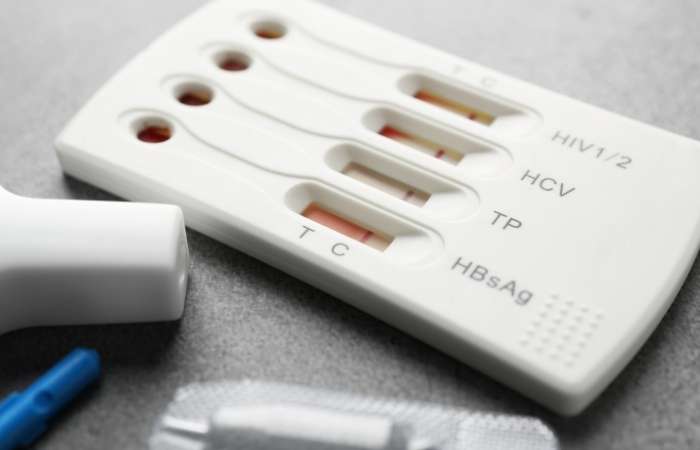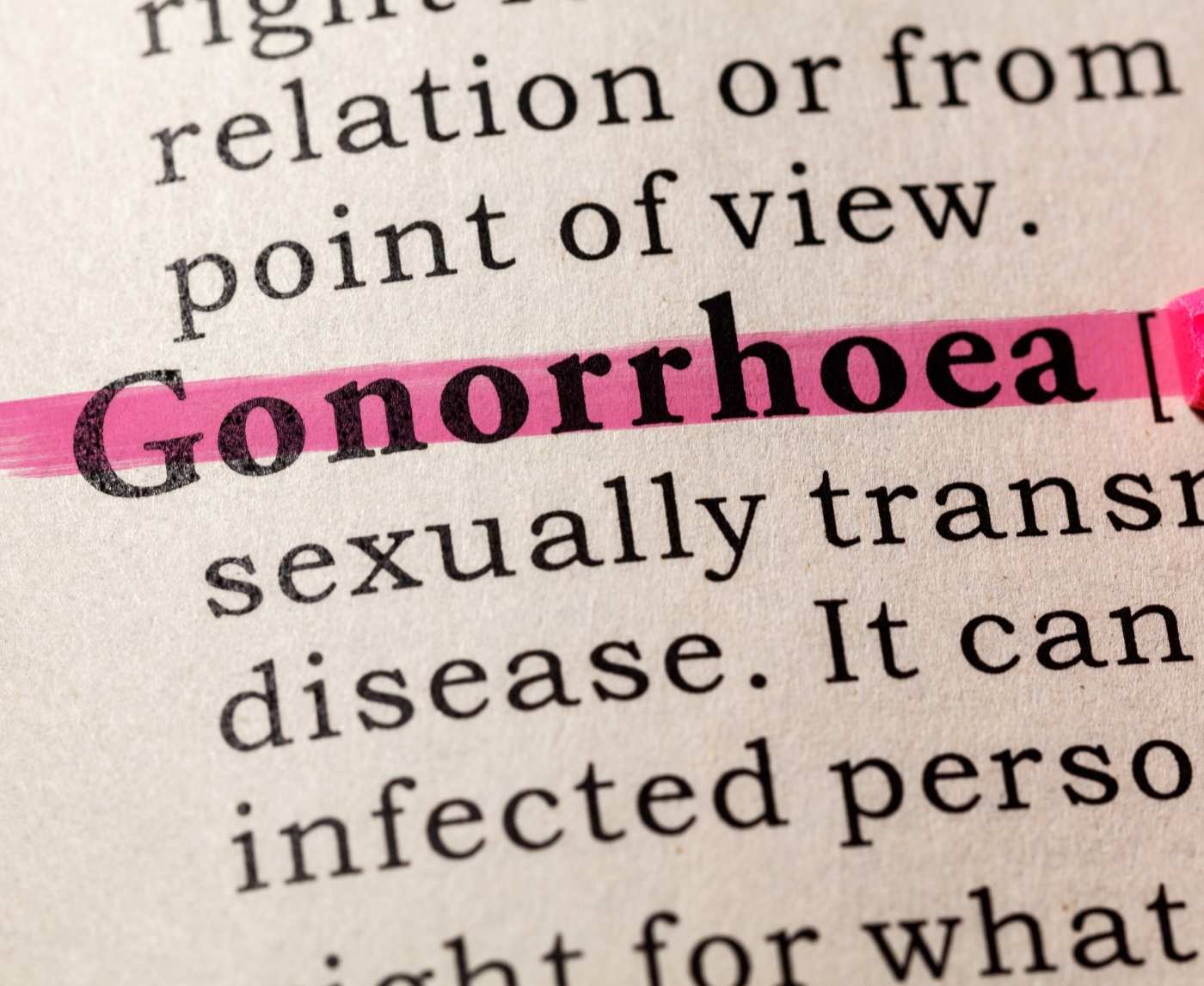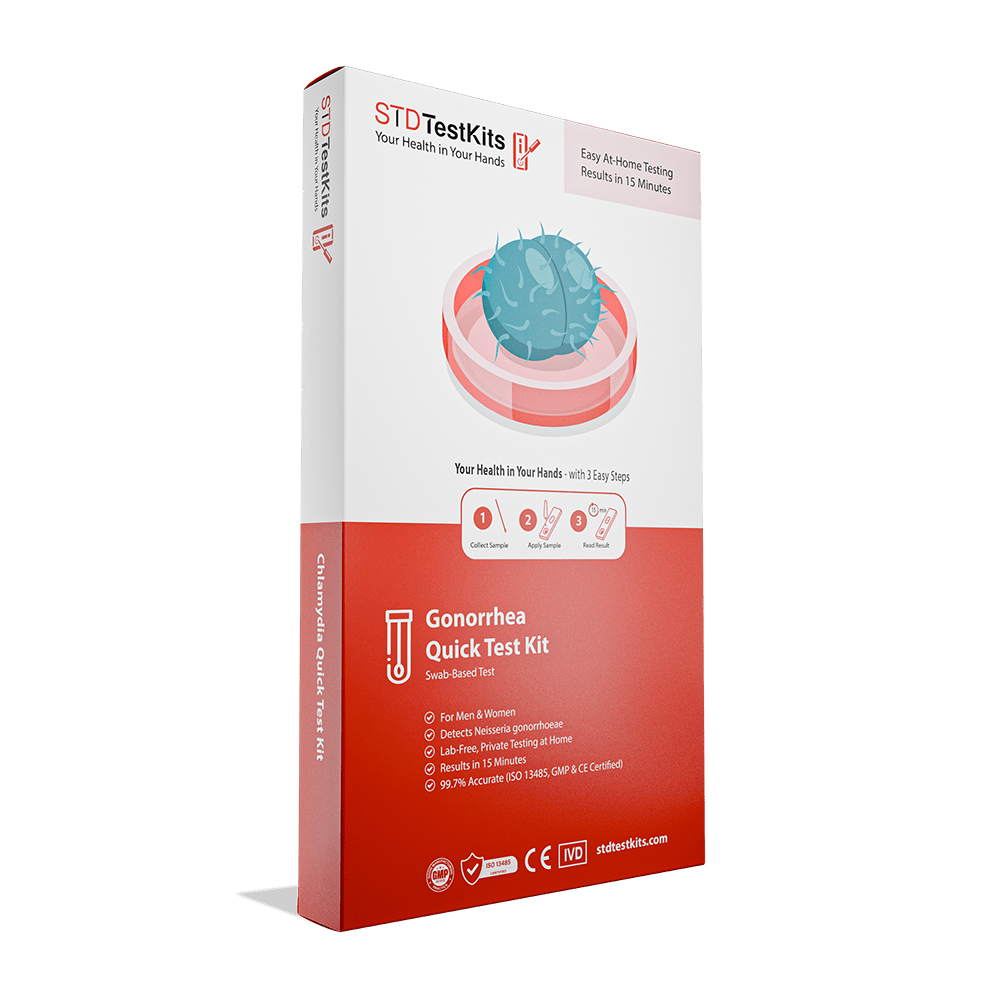How Accurate Are Chlamydia At Home Tests?
Quick Answer: WHO has confirmed that drug-resistant gonorrhea is on the rise around the world, especially in Asia and Africa. This means that testing early, whether at home or in a clinic, is more important than ever. Tests done at home are still very important because they help people find infections earlier, which leads to faster treatment and lowers the risk of spreading the infection or resistance.
Why the WHO Warning Matters, And What It Means for Testing
The latest WHO report paints a worrying picture: as gonorrhea strains become more resistant to common antibiotics, the global health community faces the growing risk of STIs that can't be treated. The report says that resistance rates are higher in Asia and Africa, but experts say this is a problem all over the world. The pathogen is changing faster than our treatment plans, and if we don't catch infections early, there may be fewer ways to cure them.
These articles underscore a crucial shift: treatment is no longer the fallback. Prevention, early testing, and immediate intervention are now our strongest weapons. This is where at-home testing steps in, not as a replacement for treatment, but as a frontline tool for awareness and speed. If someone tests positive early with a home kit, they can still access antibiotics while they work. Delay that by weeks, or stay untested, and you risk needing options that no longer exist.
This blog builds on the WHO’s alert by offering practical, test-based guidance: how to know if you’re at risk, when and how to test for gonorrhea, and what to do if you test positive in 2025’s evolving landscape. The stakes have changed. So has the urgency to know your status.
People are also reading: Syphilis Surge in the U.S.: Why It's Back and What to Do Now
Who This Guide Is For (And Why It Matters)
Whether you’re traveling internationally, have partners who do, or you just want to stay ahead of the curve, this guide is for you. It’s especially important for people without easy access to clinics, those who fear stigma or medical gatekeeping, and anyone living in regions with rising resistance. But even in cities with advanced healthcare, delays in testing still lead to more resistance, more reinfections, and more anxiety.
We're also talking to people who are in new relationships, people who are having symptoms for the first time, and people who don't know what's wrong with their bodies but are too scared to find out. If you've ever wondered, "What if it's just a UTI?" “Do I really need to test again?” or “Do I really need to test again?” This guide will answer those questions clearly, without judging you. This guide is here to answer those questions clearly, not with judgment. We'll show you the different types of tests that are available, when they work best, how to read your results, and what to do if they come back positive.
What Actually Counts as an STD Test?
When people hear “STD test,” they often picture a sterile clinic or an awkward doctor’s visit. But that’s only one version. Today, you can test for gonorrhea at home using rapid tests or mail-in kits. These tests rely on technology like NAAT (nucleic acid amplification), which detects the genetic material of the bacteria. It's the same lab technology used by clinics, just made portable.
Home tests typically involve either a urine sample or a vaginal/urethral swab. Some rapid kits give results in minutes, while mail-in tests ship your sample to a lab and return verified results in 2–3 business days. For those looking to act quickly and discreetly, at-home testing is not just valid, it’s powerful.
We recommend starting with a Combo STD Home Test Kit if you're not sure which STI you might have been exposed to. This type of kit screens for multiple infections at once and helps reduce uncertainty in cases where symptoms overlap.
Window Periods: What to Know for Each STD
If you take a test too soon, it won't work, no matter how good it is. Every infection has a window period, which is the time between when you come into contact with it and when the test can reliably find it. This usually means waiting 7 to 14 days for gonorrhea. Testing too soon makes it more likely that you'll get a false negative, which can make you feel safe when you're not. But if you wait too long, the infection can spread to your partners or deeper into your body, where it can cause problems like PID.
Figure 1. Window periods vary by STD. Testing too early can miss an active infection. For drug-resistant gonorrhea, timing matters more than ever.
Rapid Test vs Lab Test: Pros, Cons, and Tradeoffs
If you're staring at a potential exposure and weighing your options, the right test matters. A guy named Luis messaged us last month, he had a casual hookup in Manila, started feeling a burning sensation after urinating a few days later, and panicked when he read about rising resistance in the news. He didn’t want to go to a clinic overseas. He took an at-home rapid test in his hotel bathroom for peace of mind, and then followed up with a mail-in kit as soon as he got home. Both came back positive. That time window mattered. His partner got tested too, and they caught it before symptoms worsened or treatment got trickier.
Rapid tests are useful when you need fast answers, on the road, before a new partner, or when you feel symptoms and can't wait. Mail-in kits offer more lab-grade precision and broader detection. Clinics remain best for persistent symptoms, complex cases, or when you need confirmatory testing before treatment. The chart below breaks it down.
Figure 2. Comparing STD test methods. Each has strengths, what matters is testing promptly, especially with drug resistance on the rise.
When to Test After Exposure
If it’s been less than five days since the exposure, it’s too soon for even the best tests to detect gonorrhea. But we understand the spiral, many people test anyway to ease anxiety. Just remember that a negative this early doesn’t clear you. Retest in 7–14 days for accuracy. If you’re dealing with burning during urination, abnormal discharge, or pelvic pain, don't wait, go to a clinic or urgent care and mention the possible exposure. For those without symptoms, the sweet spot for testing is after day 7, with confirmation around day 14.
One user, Serena, 26, tested negative on day 4 after a condom slipped during sex abroad. But the pain didn’t go away. She repeated her test with a mail-in kit on day 12 and got a positive result. She’s now in treatment and got her partner tested, too. Testing timelines aren’t just numbers, they change outcomes.
Do You Need to Retest? Here’s How to Know
Retesting isn’t paranoia, it’s prevention. If you’ve taken antibiotics or received treatment but still feel off, or you got tested early after exposure, a second test ensures nothing was missed. For gonorrhea, retest after 14 days from the first test if you were exposed again or symptoms persist. If you were treated, wait at least 7 days before sexual activity and consider a follow-up in 4–6 weeks.
For people in open relationships or those with recurring exposures, retesting every 3 months is a smart move. It helps catch reinfection early, especially important now, as resistance makes second infections harder to treat. You don’t need to explain this to anyone. Testing is self-care, not an admission of guilt.
If you’re not sure when you last tested or were exposed, err on the side of now. Return to STD Test Kits to find the right option for your next test.
Privacy, Shipping, and Discreet Support
We’ve heard it all: “What if my roommate sees the box?” “What if it shows up late and I’m traveling?” The truth is, today’s test kits are designed for your real life. Packaging is plain, no branding or medical labels, and shipping is fast. Most orders in the U.S. arrive within 2 to 3 business days. International options may take longer, but tracking is always available.
When the WHO report hit headlines, we got a spike in orders from expats, travelers, and digital nomads who didn’t want to wait until their next clinic visit. If you’re moving between countries or living off-grid, home testing lets you stay on top of your health without navigating foreign systems or language barriers.
And if you ever need help? Discreet email support is available, no waiting rooms, no awkward intake forms. You’re not alone in this.
What If You Test Positive?
This is the moment people fear, but it’s not the end of the world. In fact, catching gonorrhea early, even if it’s a drug-resistant strain, gives you the best possible shot at successful treatment. Most cases are still treatable, especially when caught before symptoms worsen or spread. But delays increase the chances of complications, resistance, and transmission to others.
If your at-home test comes back positive, don’t sit with it alone. You can take a breath, then take the next step. That might mean contacting a telehealth provider to confirm the diagnosis and prescribe medication, or going to a clinic for a full panel and culture test to assess antibiotic resistance. The key is acting fast, not freezing.
Jordan, 33, saw a faint positive line on their test after a weekend hookup.
“I thought maybe it was a mistake,” they said. “But I didn’t ignore it. I got confirmation through my local clinic and got treatment that same week.”
Their story isn’t rare. The faster you move, the less room you leave for superbugs to evolve.
If you test positive, notify any recent partners with kindness and clarity. There are even anonymous notification tools available through public health websites. Don’t let shame block someone else from care.

People are also reading: I Treated a Yeast Infection for Months, It Was an STD
FAQs
1. Can I really get drug-resistant gonorrhea from just oral sex?
Yep, unfortunately, yes. Gonorrhea doesn’t just live in genitals. Throat infections are a real thing, and they’re one of the sneakiest ways resistance spreads. You might never feel a single symptom, but still pass it on. That’s why regular testing, especially after unprotected oral, isn’t overkill. It’s just smart.
2. If it’s resistant, what’s the point of testing?
Think of it this way: the sooner you know, the more options you have. Resistance doesn’t mean untreatable; it just means treatment might be more specialized. Early detection gives you and your provider a head start before things get complicated. And yes, even home tests can catch it, resistance doesn’t hide the infection itself.
3. What do I do if I get a positive result at home?
First: breathe. You’re not the first, and you won’t be the last. Positive just means it’s time for the next step, getting confirmation and treatment. You can call your doctor, use a telehealth service, or head to a local clinic. If you’re nervous, screenshot your result and ask questions before panicking. You’re allowed to take this one step at a time.
4. How soon after a hookup should I test?
For gonorrhea, aim for at least 7 days post-exposure. Earlier than that, and the bacteria might not be detectable yet. If you’re testing for peace of mind before that, plan to test again after day 14 to be sure. Pro tip: set a calendar reminder, it makes the follow-through easier.
5. What if I don’t have symptoms, am I still contagious?
100%. Gonorrhea loves to fly under the radar. Most people who carry it don’t even know they’re infected, which is exactly how it spreads so fast. No symptoms doesn’t mean no risk. That’s why asymptomatic testing matters way more than we think.
6. Can I get treated and still get it again?
Absolutely. Treatment clears the infection, but not your immunity, because there isn’t one. You can catch it again from an untreated partner, or from someone new. That’s why regular testing (and treating partners) is just as important as the meds.
7. Are home tests actually legit for gonorrhea?
Yes, and they’ve come a long way. The best ones use the same NAAT tech clinics do. Just make sure you’re testing during the right window (7–14 days after exposure), and follow instructions carefully. If something feels off, double test or go get confirmation. Accuracy starts with timing and technique.
8. Can I fly with test kits in my bag?
Totally. They’re discreet, legal, and don’t trigger airport security. Whether you’re going to Burning Man, backpacking Southeast Asia, or heading home for the holidays, they’re a quiet way to stay in control without clinic drama.
9. Help, the line on my test is super faint. Am I positive or not?
Faint lines can still mean positive. It’s like a pregnancy test: the line is there, the result is real. But if you’re unsure, re-test or send in a mail-in kit for backup. Better to double check than sit in the “maybe” zone.
10. Is drug-resistant gonorrhea going to become untreatable?
We’re not there yet, but the risk is real. That’s why the WHO is shouting about it now. Testing, partner notification, and early treatment are our best weapons. You’re not helpless in this story, you’re the reason it won’t spread further.
You Deserve Answers, Not Assumptions
It’s easy to feel overwhelmed by headlines about drug-resistant STDs. But here’s the truth: you’re not powerless. You can test. You can act early. You can protect your partners. You can prevent things from getting worse. The WHO’s report is a warning, but it’s also a reminder that catching infections early still makes a huge difference.
If you’ve had a recent exposure, symptoms, or even just a gut feeling that something might be off, don’t wait for certainty. You don’t need a perfect moment or a formal diagnosis to care for yourself. This at-home combo test kit checks for the most common STDs discreetly and quickly, because testing is prevention, not punishment.
How We Sourced This Article: We combined current guidance from leading medical organizations with peer-reviewed research and lived-experience reporting to make this guide practical, compassionate, and accurate. In total, around fifteen references informed the writing; below, we’ve highlighted six of the most relevant and reader-friendly sources.
Sources
Drug-Resistant Gonorrhea Rising, Warns WHO – FinanzNachrichten
Asia and Africa Report Highest Rates of Gonorrhea Resistance – MSN
Emerging Antimicrobial Resistance in Neisseria Gonorrhoeae – NIH
WHO: Gonorrhea Becoming Harder to Treat Globally
Global Surveillance of Gonorrhea Drug Resistance – HIVandMore
About the Author
Dr. F. David, MD is a board-certified infectious disease specialist focused on STI prevention, diagnosis, and treatment. He blends clinical precision with a no-nonsense, sex-positive approach and is committed to expanding access for readers in both urban and off-grid settings.
Reviewed by: Dr. Nina Hartley, MPH | Last medically reviewed: November 2025
This article is for informational purposes and does not replace medical advice.






